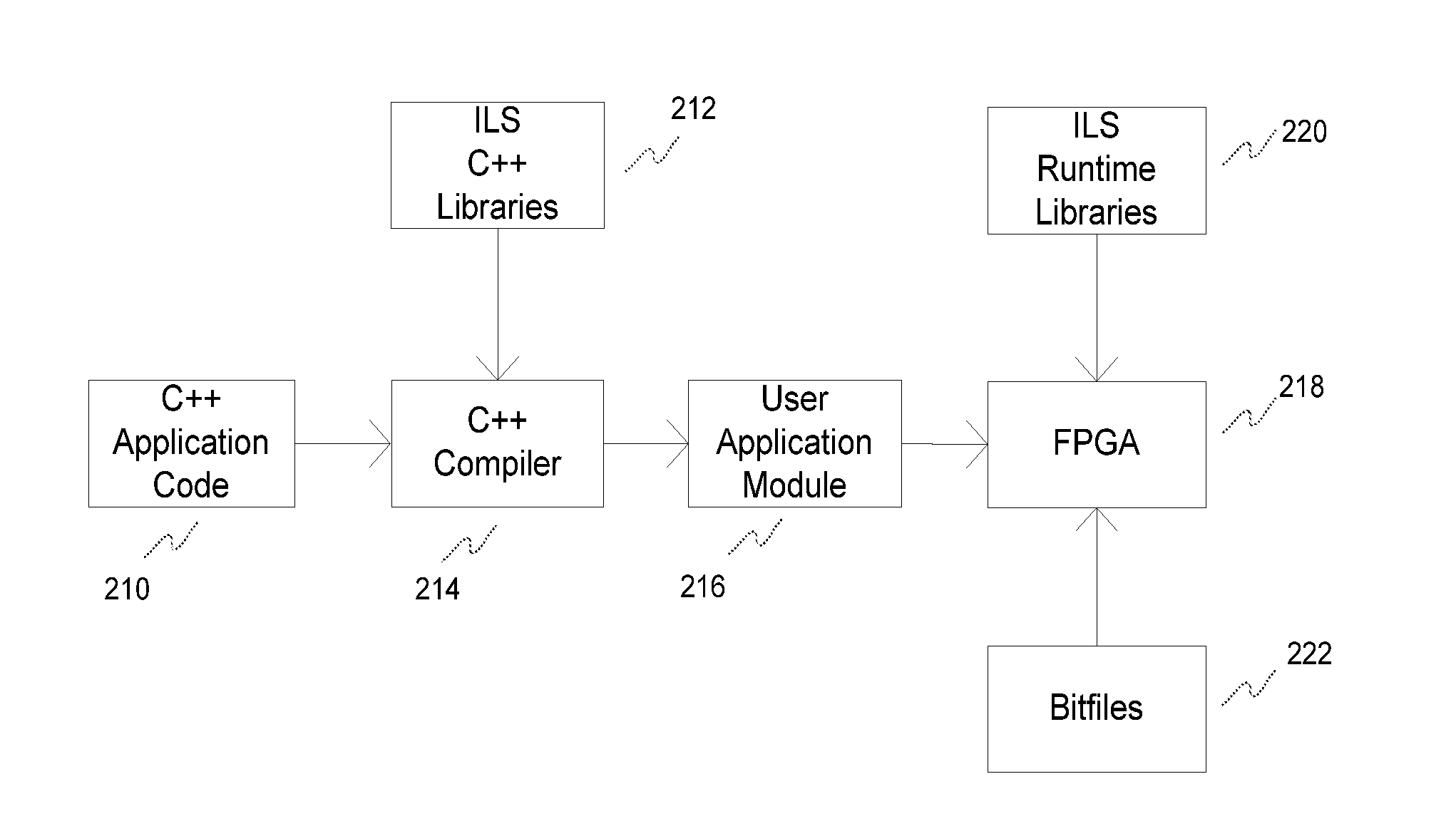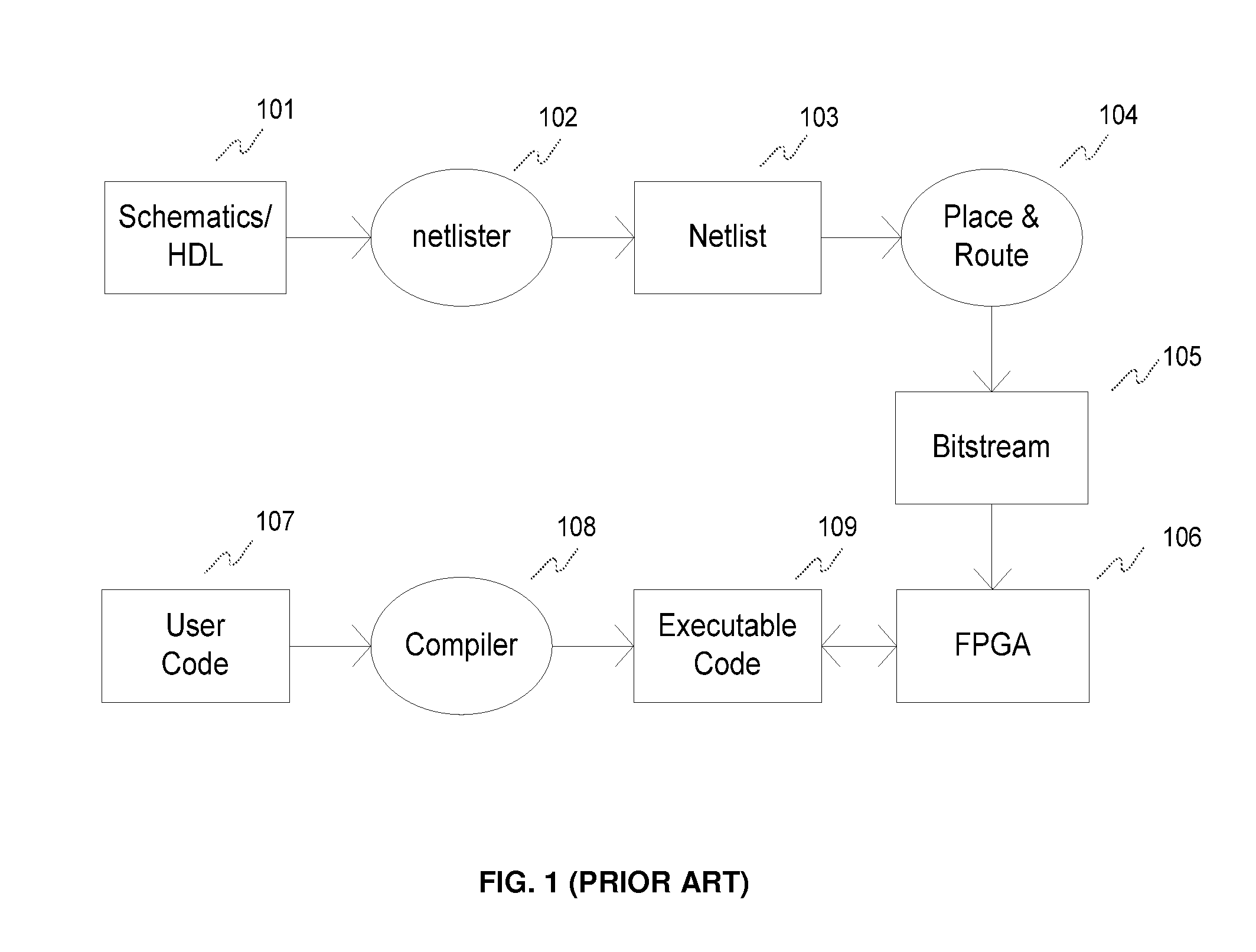Reconfigurable computing system and method of developing application for deployment on the same
a computing system and reconfigurable technology, applied in the direction of specific program execution arrangements, program control, instruments, etc., can solve the problems of limiting the ability to rely on instruction-level parallelism and higher clock frequencies to achieve performance growth, a task ill-equipped for software engineers who often lack hardware knowledge, and designers do need fpga knowledg
- Summary
- Abstract
- Description
- Claims
- Application Information
AI Technical Summary
Benefits of technology
Problems solved by technology
Method used
Image
Examples
example
[0047]The below code sequence illustrates part of an exemplary application code 210 developed using C++ according to the embodiment of a method of developing an application for deployment on a computing system of the invention as shown in FIGS. 2 and 3.
1#define ID 02signal sample(12, 1, ils_real) ;3signal demodulated(16, 1, ils_complex) ;4signal ms(32, 1, ils_real) ;5signal sum(38, 1, ils_real) ;6signal last(32, 1, ils_real) ;7signal scaled(32, 1, ils_real) ;8signal decimated(32, 1, ils_real) ;9sample= ils_adc(0) ;10demodulated = demod (sample) ;11ms= ils_mags (demodulated) ;12last= ils_delay (ms, 64) ;13sum= (ms − last) + sum ;14scaled= ils_extract (sum, 37, 6) ;15decimated= ils_decimate (scaled, 16) ;16ils_hsb_out (decimated, ID) ;17int rms, ave;18while (trule) {19 ave = ils_hsb_read (ID) ;20 rms = sqrt (ave) ;21 / / do something with the rms22 / / . . .23}
[0048]The example as shown in the above exemplary application code sequence shows the computation of the root mean square (RMS) ...
PUM
 Login to View More
Login to View More Abstract
Description
Claims
Application Information
 Login to View More
Login to View More - R&D
- Intellectual Property
- Life Sciences
- Materials
- Tech Scout
- Unparalleled Data Quality
- Higher Quality Content
- 60% Fewer Hallucinations
Browse by: Latest US Patents, China's latest patents, Technical Efficacy Thesaurus, Application Domain, Technology Topic, Popular Technical Reports.
© 2025 PatSnap. All rights reserved.Legal|Privacy policy|Modern Slavery Act Transparency Statement|Sitemap|About US| Contact US: help@patsnap.com



